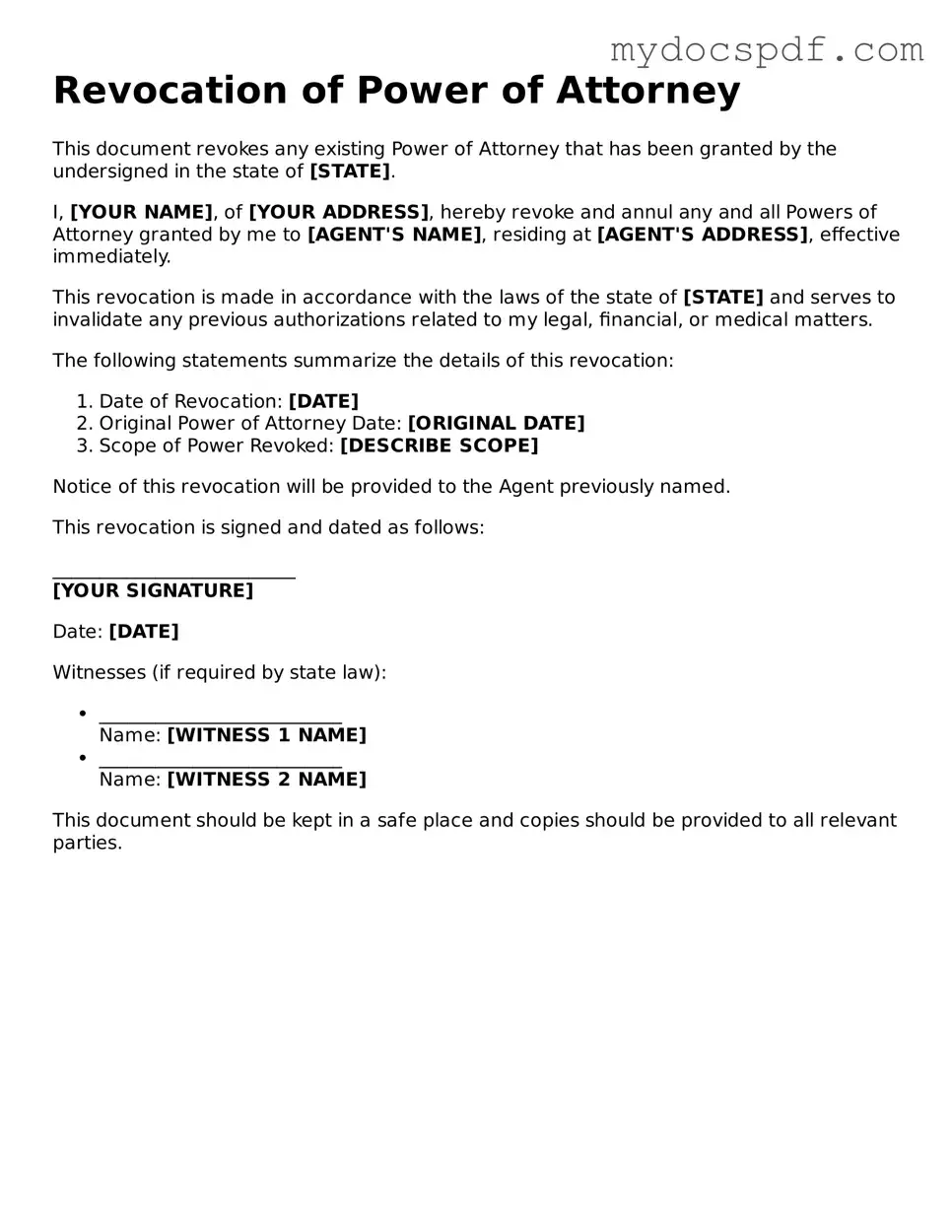Revocation of Power of Attorney
This document revokes any existing Power of Attorney that has been granted by the undersigned in the state of [STATE].
I, [YOUR NAME], of [YOUR ADDRESS], hereby revoke and annul any and all Powers of Attorney granted by me to [AGENT'S NAME], residing at [AGENT'S ADDRESS], effective immediately.
This revocation is made in accordance with the laws of the state of [STATE] and serves to invalidate any previous authorizations related to my legal, financial, or medical matters.
The following statements summarize the details of this revocation:
- Date of Revocation: [DATE]
- Original Power of Attorney Date: [ORIGINAL DATE]
- Scope of Power Revoked: [DESCRIBE SCOPE]
Notice of this revocation will be provided to the Agent previously named.
This revocation is signed and dated as follows:
__________________________
[YOUR SIGNATURE]
Date: [DATE]
Witnesses (if required by state law):
- __________________________
Name: [WITNESS 1 NAME]
- __________________________
Name: [WITNESS 2 NAME]
This document should be kept in a safe place and copies should be provided to all relevant parties.
